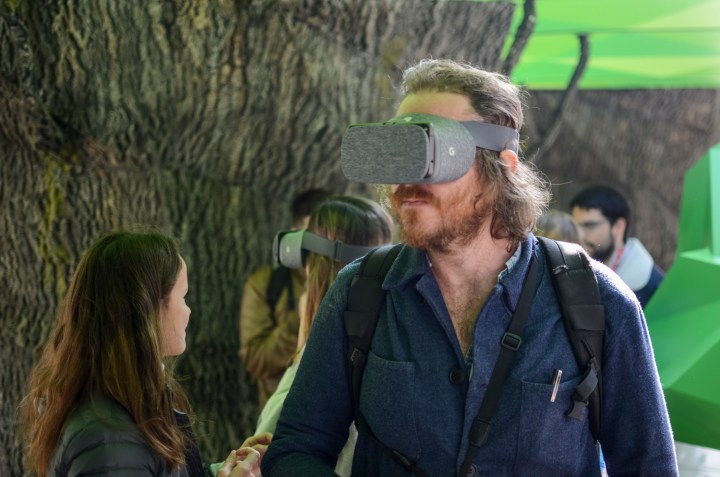
Until recently, virtual reality web browsing was not officially supported by the main Chrome branch on any platform. Chromium had some support, but Mozilla was ahead of the game with its Nightly releases, which were the most accepting of VR web standards like WebVR. Now though, if you have a Daydream-supporting device and Chrome 61 or newer, you can browse the internet through your headset.
That’s not to say that the experience is likely to be revolutionary. Most pages will still leave you faced with 2D content, which with current headset resolutions and clarity does not make for easy reading. Especially on white-backed websites, which dominate the current crop of popular sites and services.
But, as per our discussion on the topic, Google knows that the current state of the web isn’t ready for virtual reality browsing en masse. Chrome 61 supports WebVR so there are a few 3D websites to explore with content displayed in a more intuitive manner for VR interaction, but it’s just the first step on a long road to making an internet that’s as easy to browse as it is currently, in a manner that makes sense for a three-dimensional, roomscale space.
The new Chrome release was announced by Chromium evangelist Francois Beaufort, who said that the new support for virtual reality web browsing on DayDream was “just the beginning,” and that there would be “more to come” in the near future.
What that means is anyone’s guess, but AndroidCentral does point out that with the Google Pixel 2 event just a few days away, we could learn more then.
There are many things that need to be done before we can comfortably and intuitively browse the internet in virtual reality. Upgrading the hardware is one of them. It might take something like the newly debuted 8K Pimax headsets to make this kind of use comfortable on the eyes.
Editors' Recommendations
- 5 web browsers you should use instead of Google Chrome or Edge
- I found a Chrome extension that makes web browsing bearable again
- This new Google Chrome feature may boost your search history
- With new swappable faceplates, the Vive Cosmos is now a modular VR platform
- Web inventor Berners-Lee wants to save us from a digital dystopia




